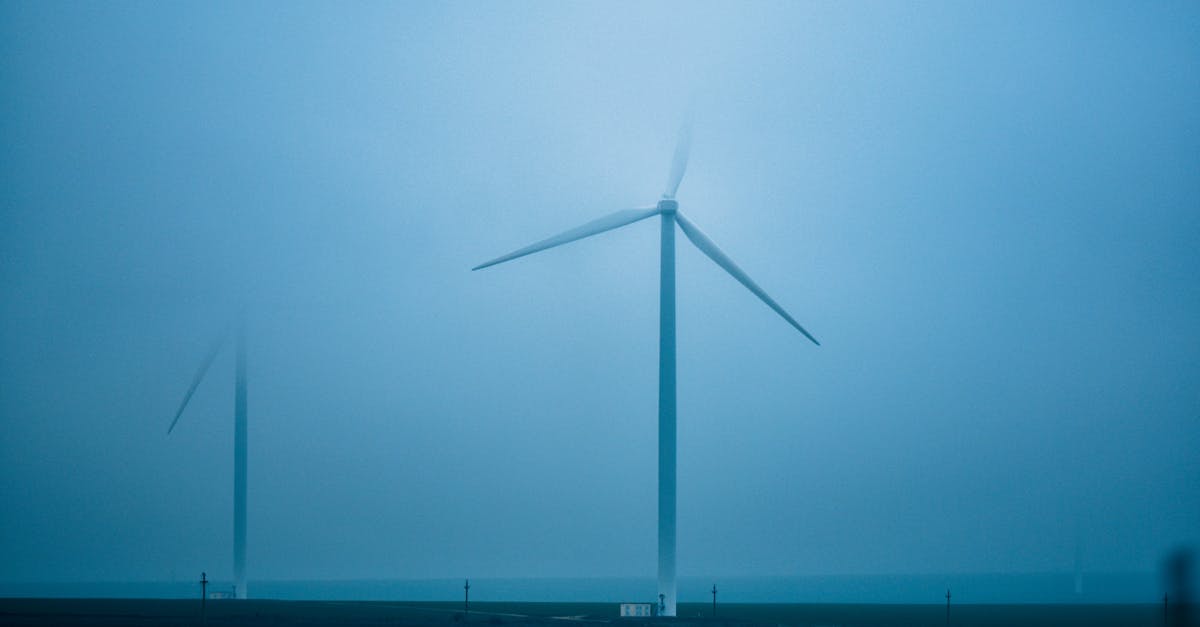Unveiling the Truth: Exploring the Efficacy and Applications of Atmospheric Water Generators

Do Atmospheric Water Generators Really Work?
In the face of growing water scarcity, atmospheric water generators are emerging as a potential solution. These devices claim to extract water from the air, offering a sustainable alternative to traditional water sources. But do they really live up to the hype? This article delves into the science behind atmospheric water generators, exploring their efficacy, benefits, limitations, and potential applications.
Thank you for reading this post, don't forget to subscribe!
Harnessing the invisible reservoir of moisture suspended in the air, atmospheric water generators offer a glimpse of a future where water security is no longer dependent on dwindling natural sources. But as with any technology, it’s essential to examine the claims and separate the facts from the fiction. This article aims to provide a comprehensive overview of atmospheric water generators, empowering you to make informed decisions about their potential impact on water sustainability.
1. The Essence of Atmospheric Water Generators
The Essence of Atmospheric Water Generators
At the heart of atmospheric water generators lies a simple yet ingenious mechanism that mimics nature’s own water cycle. These devices capitalize on the principle of condensation, the process by which water vapor in the air transforms into liquid water. By carefully controlling temperature and humidity levels, atmospheric water generators create an environment that promotes condensation, capturing water from the surrounding air.
The process begins with a fan that draws in air, passing it through a series of охлаждающих элементов. These охлаждающих элементов cool the air, causing the water vapor it holds to condense into tiny droplets. The condensed water is then collected and stored in a reservoir for later use.
The effectiveness of atmospheric water generators depends on several factors, including the humidity of the surrounding air, the temperature of the охлаждающих элементов, and the efficiency of the condensation process. In areas with high humidity, atmospheric water generators can produce significant amounts of water, making them a viable alternative to traditional water sources. However, in arid environments, their productivity may be limited.
Harnessing Humidity: A Brief Overview
Harnessing Humidity: A Brief Overview
The success of atmospheric water generators hinges on their ability to harness humidity, the amount of water vapor present in the air. Humidity levels vary greatly depending on factors such as temperature, location, and weather conditions.
In regions with high humidity, such as coastal areas or tropical rainforests, atmospheric water generators can operate at peak efficiency. The abundant water vapor in the air allows them to extract significant amounts of water. However, in arid environments, where humidity levels are low, the performance of atmospheric water generators is diminished.
To compensate for low humidity, some atmospheric water generators employ additional mechanisms, such as pre-cooling the air before it enters the condensation chamber. This pre-cooling process increases the relative humidity of the air, making it more conducive to condensation.
Understanding the relationship between humidity and atmospheric water generator performance is crucial for assessing their viability in different locations. By carefully considering the local humidity levels, you can determine whether an atmospheric water generator is a suitable solution for your water needs.
Types of Atmospheric Water Generators
Types of Atmospheric Water Generators
The world of atmospheric water generators encompasses a diverse range of designs and mechanisms, each tailored to specific environments and applications. Here are the two main types of atmospheric water generators:
1. Desiccant-Based Atmospheric Water Generators:
Desiccant-based atmospheric water generators employ a hygroscopic material called a desiccant to extract water from the air. The desiccant attracts and absorbs water vapor, which is then released as the desiccant is heated. Desiccant-based generators are generally more energy-efficient than compressor-based generators, making them suitable for use in remote areas or off-grid applications. However, they require regular maintenance to replace or regenerate the desiccant.
2. Compressor-Based Atmospheric Water Generators:
Compressor-based atmospheric water generators use a компрессор to cool the incoming air, causing the water vapor to condense into liquid water. These generators are typically more powerful and can produce larger quantities of water than desiccant-based generators. However, they also consume more energy and may be less suitable for use in areas with limited electricity access.
The choice between desiccant-based and compressor-based atmospheric water generators depends on factors such as the desired water production capacity, energy availability, and maintenance requirements.
2. Efficacy of Atmospheric Water Generators
Efficacy of Atmospheric Water Generators
The effectiveness of atmospheric water generators is influenced by several key factors, including:
1. Humidity Levels:
Humidity levels play a crucial role in determining the performance of atmospheric water generators. These devices rely on the presence of water vapor in the air to extract water. In areas with high humidity, atmospheric water generators can produce significant amounts of water. However, in arid environments with low humidity levels, their productivity may be limited.
2. Ambient Temperature:
Ambient temperature also affects the efficiency of atmospheric water generators. The condensation process is more effective at lower temperatures, as the air can hold less water vapor at lower temperatures. Therefore, atmospheric water generators tend to perform better in cooler climates or during the cooler hours of the day.
3. Generator Capacity:
The capacity of an atmospheric water generator refers to the amount of water it can produce in a given period of time. Generator capacity is typically measured in liters per day (LPD). The capacity of a generator depends on its size, design, and efficiency. Larger generators with higher capacities are generally more expensive and consume more energy.
Understanding these factors is essential for assessing the suitability of atmospheric water generators for specific applications and locations.
The Role of Humidity and Temperature
The Role of Humidity and Temperature
Humidity and temperature are two critical factors that influence the water production capabilities of atmospheric water generators. Here’s a closer look at their combined impact:
1. Humidity:
Humidity refers to the amount of water vapor present in the air. It is a key factor in determining the performance of atmospheric water generators. These devices rely on the presence of water vapor in the air to extract water. In areas with high humidity, such as coastal regions or tropical rainforests, atmospheric water generators can produce significant amounts of water. However, in arid environments with low humidity levels, their productivity may be limited.
2. Temperature:
Ambient temperature also plays a role in the efficiency of atmospheric water generators. The condensation process, which is the process by which water vapor in the air is converted into liquid water, is more effective at lower temperatures. This is because air can hold less water vapor at lower temperatures. Therefore, atmospheric water generators tend to perform better in cooler climates or during the cooler hours of the day.
3. Combined Impact:
The combined impact of humidity and temperature on atmospheric water generators is complex. In general, higher humidity levels and lower temperatures lead to increased water production. However, there is an optimal range of humidity and temperature for each type of atmospheric water generator. Operating outside of this optimal range can result in decreased performance.
Understanding the relationship between humidity, temperature, and atmospheric water generator performance is crucial for assessing their suitability for specific applications and locations.
Assessing Generator Capacity and Efficiency
Assessing Generator Capacity and Efficiency
Evaluating the performance of atmospheric water generators involves examining two key metrics: water production rate and energy consumption. Here’s a closer look at each metric:
1. Water Production Rate:
The water production rate of an atmospheric water generator refers to the amount of water it can produce in a given period of time, typically measured in liters per day (LPD). This metric is crucial for determining the suitability of a generator for specific applications. For instance, a household may require a generator with a higher water production rate than a small office.
2. Energy Consumption:
Energy consumption refers to the amount of electricity required to operate an atmospheric water generator. It is typically measured in kilowatt-hours per day (kWh/day). Energy consumption is an important consideration, especially for off-grid applications or areas with limited electricity access. Generators with lower energy consumption are more cost-effective to operate in the long run.
3. Efficiency:
The efficiency of an atmospheric water generator is a measure of how effectively it converts electrical energy into water. It is typically expressed as a percentage. A more efficient generator will produce more water for the same amount of energy consumed.
Understanding these metrics is essential for comparing different atmospheric water generators and selecting the most suitable option for your needs.
3. Benefits and Applications of Atmospheric Water Generators
Benefits and Applications of Atmospheric Water Generators
Atmospheric water generators offer a range of benefits and practical applications, particularly in areas facing water scarcity and environmental challenges:
1. Water Security in Remote Areas:
Atmospheric water generators can provide a reliable source of clean drinking water in remote areas or regions with limited access to traditional water sources. They can be particularly valuable for communities that rely on rainwater harvesting or desalination, which can be unreliable or expensive.
2. Environmental Sustainability:
By reducing reliance on unsustainable water extraction methods, such as groundwater pumping or bottled water, atmospheric water generators contribute to environmental sustainability. They do not require the use of chemicals or produce harmful byproducts, making them an environmentally friendly water solution.
3. Disaster Relief:
During natural disasters or emergencies when traditional water sources are compromised, atmospheric water generators can provide a vital source of water for affected communities. They are easy to transport and can be set up quickly, making them ideal for disaster relief efforts.
4. Off-Grid Applications:
Atmospheric water generators are well-suited for off-grid applications, such as remote cabins, boats, or RVs. They offer a convenient and reliable way to access clean water without relying on external water sources or infrastructure.
Water Security in Remote Areas
Water Security in Remote Areas
In remote regions where access to clean drinking water is a challenge, atmospheric water generators offer a promising solution. These devices can extract water from the air, providing a reliable and sustainable source of water for communities that may otherwise struggle to meet their daily water needs.
One of the key advantages of atmospheric water generators for remote areas is their independence from traditional water sources, such as rivers, lakes, or groundwater. This makes them particularly valuable in regions that experience water scarcity or where water infrastructure is limited or non-existent.
Atmospheric water generators can also be particularly beneficial for communities that rely on rainwater harvesting. Rainwater harvesting systems are often vulnerable to seasonal variations in rainfall, and they can run dry during extended periods of drought. Atmospheric water generators, on the other hand, can provide a consistent supply of water regardless of the weather conditions.
Environmental Sustainability
Environmental Sustainability
The use of atmospheric water generators has several significant environmental benefits, particularly in terms of reducing reliance on unsustainable water extraction methods. Here’s a closer look at how these devices contribute to environmental sustainability:
1. Reduced Groundwater Depletion:
Groundwater depletion is a major environmental issue in many parts of the world, as excessive pumping can lead to the drying up of aquifers and disruption of ecosystems. Atmospheric water generators offer a sustainable alternative to groundwater extraction, as they do not rely on this precious resource.
2. Decreased Energy Consumption:
Compared to traditional water sources, such as desalination plants, atmospheric water generators generally consume less energy to produce the same amount of water. This is because the process of extracting water from the air requires less energy than the process of purifying saltwater or pumping groundwater.
3. Lower Carbon Emissions:
The reduction in energy consumption associated with atmospheric water generators also leads to lower carbon emissions. By relying on renewable energy sources, such as solar or wind power, to operate these devices, it is possible to further minimize their environmental impact.
4. Considerations and Limitations of Atmospheric Water Generators
Considerations and Limitations of Atmospheric Water Generators
While atmospheric water generators offer a range of benefits, it is important to acknowledge their limitations and practical considerations to ensure informed decision-making:
1. Cost and Energy Consumption:
The initial cost of purchasing and installing an atmospheric water generator can be significant, and these devices also consume electricity to operate. It is important to carefully consider the long-term costs and energy requirements to determine if an atmospheric water generator is a feasible option for your needs.
2. Water Production Capacity:
The water production capacity of atmospheric water generators can vary depending on factors such as humidity levels and ambient temperature. It is important to choose a generator with a capacity that meets your daily water requirements, and to be aware that production may be lower in certain climates or during certain times of the year.
3. Maintenance and Environmental Impact:
Atmospheric water generators require regular maintenance, including cleaning and filter replacement. Additionally, the disposal of wastewater produced by these devices should be considered. It is important to properly maintain and dispose of wastewater to minimize any potential environmental impact.
Cost and Energy Consumption
Cost and Energy Consumption
The financial implications and energy requirements of atmospheric water generators are important factors to consider when evaluating their suitability for different budgets and applications:
1. Initial Cost:
The initial cost of purchasing and installing an atmospheric water generator can vary depending on the size, capacity, and features of the unit. It is important to factor in the upfront investment when considering an atmospheric water generator, and to compare the cost to other water sources or purification systems.
2. Energy Consumption:
Atmospheric water generators consume electricity to operate, and the amount of energy consumed will depend on the size and efficiency of the unit. It is important to consider the ongoing energy costs associated with an atmospheric water generator, and to ensure that you have a reliable and affordable energy source.
3. Suitability for Different Applications:
The cost and energy requirements of atmospheric water generators should be evaluated in the context of the specific application. For small-scale, residential use, the cost and energy consumption may be less of a concern. However, for large-scale or commercial applications, the financial and energy implications should be carefully considered.
Maintenance and Environmental Impact
Maintenance and Environmental Impact
The ongoing maintenance needs and potential environmental impacts associated with the use of atmospheric water generators should be carefully considered:
1. Regular Maintenance:
Atmospheric water generators require regular maintenance to ensure optimal performance and longevity. This may include tasks such as cleaning the unit, replacing filters, and checking for any leaks or blockages. It is important to follow the manufacturer’s recommended maintenance schedule to keep the unit running efficiently.
2. Wastewater Disposal:
Atmospheric water generators produce wastewater as a byproduct of the water extraction process. This wastewater typically contains dissolved minerals and salts, and it is important to dispose of it properly to avoid any negative environmental impacts. Some units may have built-in wastewater storage and disposal systems, while others may require manual disposal.
3. Energy Source:
The environmental impact of atmospheric water generators also depends on the energy source used to power them. If the generator is powered by renewable energy sources, such as solar or wind power, its environmental impact will be significantly reduced. However, if the generator is powered by fossil fuels, it will contribute to greenhouse gas emissions.
Are atmospheric water generators suitable for all climates?
The effectiveness of atmospheric water generators is influenced by humidity levels and ambient temperature. They work best in humid climates with warm temperatures. In arid or cold climates, their water production capacity may be limited.
Can atmospheric water generators produce enough water for a household?
The water production capacity of atmospheric water generators varies depending on the size and efficiency of the unit. Some larger units can produce enough water to meet the daily needs of a small household, while smaller units may be more suitable for individual use or as a supplementary water source.
Are atmospheric water generators environmentally friendly?
The environmental impact of atmospheric water generators depends on the energy source used to power them. If they are powered by renewable energy sources, such as solar or wind power, they can be a sustainable water solution. However, if they are powered by fossil fuels, they will contribute to greenhouse gas emissions.




